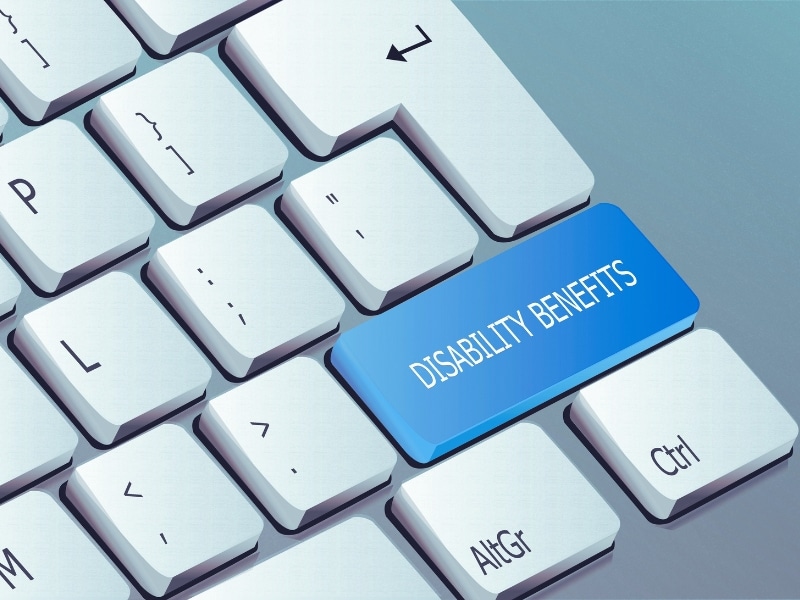When you apply for Social Security disability benefits, your monthly benefit payment is decided by a formula based on your earnings over a period of time. Your employment earnings and Social Security guidelines will be key factors in determining how much you get for disability.
How Much Do You Get for Disability?
Workers who are eligible and approved for SSDI benefits will receive monthly payments based on their average lifetime earnings before their disability began. Contrary to workers’ compensation, veterans’ compensation, and Supplemental Security Income (SSI), SSDI benefits depend on an individual’s lifetime earnings and the severity of his or her disability.
Social Security disability insurance (SSDI) pays disability benefits to workers and their family members when a sufficient number of work credits have been accumulated by the SSDI applicant. The worker (applicant) applying for SSDI must earn a certain amount of work credits based on a total of taxable employment income and payment of Social Security taxes.
The Social Security Administration (SSA) is the federal government agency that finances SSDI benefit payments for eligible applicants. Eligibility for Social Security disability benefits is open to all workers with enough work credits, their spouses or widowers, their children, disabled or blind workers under 65 years of age, and adults disabled since childhood.
SSDI Benefit Payments
Typically, most SSDI applicants who are approved for benefits receive from $800 to $1,500 per month. If they are receiving disability payments from other sources, their benefits may be reduced accordingly. The maximum monthly SSDI benefits payment for 2023 is $3,627, while the average monthly benefit payment for 2023 is $1,483. The average monthly benefit payment for 2023 for recipients who have a spouse and children is $2,616, but most recipients receive less than that. Only 10% of SSDI recipients receive $2,000 or more per month.
The range of SSDI benefit payments varies greatly between individuals because benefits depend on lifetime earnings. For 55-year-old applicants who have worked their entire adult lives, SSDI benefits range from $1,000 to $3,000, depending on their income and level of disabilities.
Annual Income at Age 54 Monthly SSDI Benefit at Age 55
$25,000 $1,000 – $1,400
$50,000 $1,600 – $2,100
$75,000 $2,200 – $2,600
$100,000 $2,600 – $3,000
Within these ranges, how much you get for disability may vary based on the following factors:
- The person’s average income over an employment period of 35 years
- Whether the person paid self-employment taxes from a business or freelance work
- If the person worked in state or local government jobs that did not pay into Social Security
- If the person took time off from his or her job due to a long-term illness
- If the person took time off from his or her job for child-rearing responsibilities
How Does the SSA Determine How Much You Will Receive in Disability Benefits?
The SSA uses a weighted formula to calculate SSDI benefits for each individual who applies. To start the process, you must first fill out a disability insurance benefits application and submit it to SSA. You can apply for SSDI benefits in 3 ways: by completing an online application, by calling the SSA directly, or by calling or visiting a local SSA office in your area.
You can also contact a Social Security disability lawyer to help you with the application process. Disability lawyers have extensive knowledge about Social Security disability applications and claims. They can help you with the entire filing process, which usually includes submitting required documents to show proof of age, marital status, income, tax returns, work history, disabilities, and medical records.
Once SSA receives your application for benefits, your application will be submitted to a State Disability Determination Agency, so that they can gather further information needed to make a preliminary decision. Your claim will be forwarded to a claims adjudicator, who may require further information. You may also be required to see an appointed doctor of their choosing for a thorough medical exam to evaluate your disabilities. After all of this is completed, you will be notified that your application for SSDI benefits is either approved or denied.
What Are the Qualifications for Disability Benefits in Illinois?
When the SSA determines how much you get for disability, they look at your work history eligibility requirements and your disability requirements.
Work Eligibility Requirements
To meet the SSDI work eligibility requirements, you must have worked long enough and recently enough to qualify. Eligibility is based on the number of work credits you have earned. For each quarter of work with an income of a certain amount, you can earn one work credit. The number of credits required to qualify for benefits will depend on your age. These general rules apply:
- You must have earned 40 work credits, with 20 of them earned within the last 10 years
- You may qualify for fewer work credits if you are younger than 31 years old
Medical Requirements
You must be considered disabled to qualify for SSDI benefits. The SSA determines disability according to the following criteria:
- You can no longer perform your former job duties
- You can not perform other work or job duties due to your medical condition
- Your disability has lasted or is expected to last for at least one year, or result in your death
The SSA maintains a Medically Approved Listing of Impairments shown in the Blue Book. If your medical condition is on the list, you may automatically qualify for disability benefits. If your disability is not on the list, you may still qualify for SSDI benefits with sufficient documentation and proof of your disability. You may also qualify for Supplement Security Income benefits (SSI), but you must be disabled and meet strict income and asset regulations.
The SSDI Approval Process
In Illinois, the Bureau of Disability Determination Services (DDS) is the state-operated department that makes the initial determinations about eligibility for SSDI benefits. They determine how much you get for disability. To qualify for Social Security Disability Insurance (SSDI) benefits, you must have worked in jobs covered by Social Security and have a medical condition that meets Social Security’s strict definition of disability.
When DDS receives an application for SSDI benefits, the application is reviewed and the department gathers the applicant’s medical information or medical records that support the disability claim. Following the review of the claim, DDS may schedule a consultative examination (CE) for the applicant. A CE is a medical examination that’s conducted by a licensed physician hired by the Social Security Administration.
Like most states, Illinois has strict requirements and guidelines for SSDI benefits. Filing an SSDI claim can be a complicated and lengthy process due to strict state and federal regulations imposed by the Social Security Administration (SSA). To make the process easier and more successful, it’s beneficial to work with a Chicago disability lawyer who can oversee the process from start to finish.
How Long Will It Take to Approve My Disability Claim?
Processing time for disability applications varies depending on the nature of the disability, necessary medical evidence or examinations, and applicable quality reviews. Once DDS reviews your application and all required documentation, they will contact you about their determination in the case. You will receive a letter in the mail with a decision for approval or denial of SSDI benefits. Generally, this initial decision process takes about three to six months.
Typically, SSDI pays monthly benefits to individuals who are unable to work for a year or more because of a disability, as long as they meet the basic requirements for eligibility. There is usually a 5-month waiting period for benefits, and the first benefit payment is made in the sixth month after the date the disability began. Social Security disability benefits are paid for as many as 12 months prior to the application if the SSA finds that the individual had a disability during that time and meets all other basic requirements.
What Happens If My SSDI Claim Is Denied?
If your claim for SSDI benefits is denied, you have the right to file an appeal. To do this, you must request an appeal in writing within 60 days after you receive your notice of the DDS decision. You have a right to pursue four levels of appeal: 1- Reconsideration; 2- Review by the Appeals Council; 3- Hearing by an administrative law judge; and 4- Federal Court Review.
In most cases, disability applicants choose to pursue the SSDI appeals process with help from their disability lawyer. Applicants who file an appeal have a right to legal representation, and an experienced disability lawyer can improve their chances of winning an appeal.
How Long Do Disability Benefits Last?
SSDI benefits usually continue until the recipient is able to return to work on a regular basis. The SSA also offers special work incentives to recipients that provide continued health care coverage and disability benefits to help them make an easier transition back to work. If individuals are still receiving SSDI benefits when they reach full retirement age, their disability benefits will automatically convert to Social Security retirement benefits, however, the benefit payment amount will remain the same.




